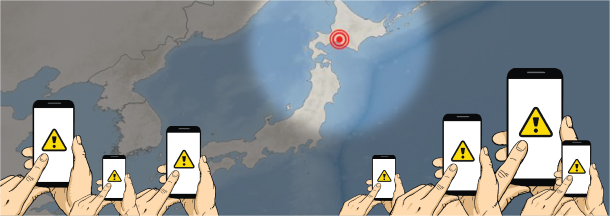Our media can learn from Japan’s

The author is a Tokyo correspondent of the JoongAng Ilbo.
On Sept. 6 of last year, a magnitude-7 earthquake hit Hokkaido, Japan. As local thermal plants sustained damage in the quake’s wake, all of Hokkaido experienced a short blackout. Equipped with its own generator, public TV channel NHK began a special broadcast. I paid special attention to an unusual plea from the NHK host.
“Deliver the information to the people in the affected area.” As the locals in Hokkaido could not watch television due to the blackout, he asked people in other regions to relay information via their cellphones and social media. This broke the conventional perception that disaster broadcasts are solely targeted at locals.
As there were areas where telecommunication networks were available even while electricity was down, information was delivered via cellphones and social media. NHK’s decision was right because delivering the news nationwide eventually helped the region.
Japan is frequently plagued by disasters and catastrophes, and the importance of disaster broadcasts cannot be overemphasized.
This is a conclusion drawn from experience — it does not spare money, time and human resources. In the media, reporters who cover disasters are considered aces.
Private broadcasters were no different. A TV Asahi host stood in front of the camera four minutes after the earthquake hit Hokkaido. The earthquake occurred at 3:08 a.m., and the information on its magnitude and origin arrived from the meteorological authority two minutes later. Text information was already on the screen, and the host began his presentation at 3:12 a.m.
While social media is more active in disastrous situations, television is still an effective medium. When fake information and fake news overflow, it is the duty of television to deliver accurate information. Disaster broadcasts often include malicious fake news about foreigners pillaging goods but they also contain crucial information, such as which gas stations are open or when the water supply will resume.
Major broadcasters’ coverage of last week’s massive wildfires in the mountains in Gangwon was met with criticism. The National Fire Agency issued the highest alert and mobilized fire trucks across the country, but networks continued to broadcast dramas and variety shows.
According to the Act on Broadcasting Communications Development, broadcasters must immediately begin disaster broadcasts during an emergency. Before blaming the budget, workforce or equipment, I hope they think about disaster broadcasting during the Hokkaido earthquake. Korean broadcasters seem to have a long way to go.
JoongAng Ilbo, April 9, Page 29










with the Korea JoongAng Daily
To write comments, please log in to one of the accounts.
Standards Board Policy (0/250자)